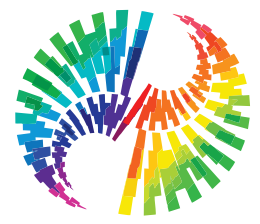SILENT HYPOXEMIA IN PATIENTS WITH COVID-19: NARRATIVE REVIEW
Keywords:
Covid-19, Hypoxia, Dyspnea, Sars-Cov-2, Respiratory SystemAbstract
Introduction: In severe cases of respiratory diseases, low saturation and hypoxemia are expected, which should result in discomfort in breathing, altered level of consciousness or organ failure. However, it was identified several patients with COVID-19 talking normally, using their cell phones and not feeling breath difficulties. This event has been named by doctors as “silent hypoxemia”, and it has become a great mystery to Science. Objetives: Report the existence of silent hypoxemia in COVID-19. Methods: Searches were carried out in the following electronic databases: Scielo, Virtual Health Library, Pubmed, ScienceDirect and Cochrane Library. The descriptors used in the research were COVID-19, silent hypoxemia, happy hypoxia, asymptomatic hypoxemia, apathetic and temporary hypoxemia. Results: The research findings include the entry of SARS-CoV-2 by the Angiotensin-Converting Enzyme 2; damage caused by the virus to central and peripheral chemoreceptors; and inflammation of the Solitary Tract Core. Conclusion: Silent hypoxemia is an important characteristic of COVID-19 that should be observed by healthcare professionals. Its early identification can prevent severe forms of the disease and help the patient's clinical evolution. However, further research is necessary to deepen the knowledge on this topic, establishing its pathophysiology and better conduct for a good prognosis.
Downloads
References
Bezerra RF, Franchi SM, Khader H, Castro RM, Liguori GR, da Fonseca da Silva L, Pedro da Silva J. COVID-19 as a confounding factor in a child submitted to staged surgical palliation of hypoplastic left heart syndrome: One of the first reports of SARS-CoV-2 infection in patients with congenital heart disease. J Thorac Cardiovasc Surg. 2020 Jun; 0022-5223(20): e1-5.
Organização Pan-Americana de Saúde [homepage na internet]. Folha informativa COVID-19 - Escritório da OPAS e da OMS no Brasil [acesso em 24 set 2020]. Disponível em: https://www.paho.org/pt/covid19.
Frizzelli A, Tuttolomondo D, Aiello M, Majori M, Bertorelli G, Chetta A. What happens to people's lungs when they get coronavirus disease 2019? Acta Biomed. 2020 May 11;91(2):146-149.
Cavezzi A, Troiani E, Corrao S. COVID-19: hemoglobin, iron, and hypoxia beyond inflammation. A narrative review. Clin Pract. 2020 May 28;10(2):1271.
Couzin-Frankel J. The mystery of the pandemic's 'happy hypoxia'. Science. 2020 May 1;368(6490):455-456.
Guan W, Ni Z, Hu Y, Liang W, Ou C, He J et al, Clinical Characteristics of Coronavirus Disease 2019 in China, N Engl J Med 382;18; April 30, 2020.
Silva DF, Oliveira MLC. Epidemiologia da COVID-19: comparação entre boletins epidemiológicos. Com. Ciências Saúde 2020;31 Suppl 1:61-74
Souza CDF, Leal TC, Santos LG. Doenças do Aparelho Circulatório em Indivíduos com COVID-19: Descrição do Perfil Clínico e Epidemiológico de 197 Óbitos. Arq. Bras. Cardiol. 2020 Aug; 115(2):281-283.
Teo, J. Early Detection of Silent Hypoxia in Covid-19 Pneumonia Using Smartphone Pulse Oximetry. J Med Syst 44, 134 (2020).
Xie J, Covassin N, Fan Z, Singh P, Gao W, Li G, et al. Association Between Hypoxemia and Mortality in Patients With COVID-19. Mayo Clin Proc. 2020 Jun;95(6):1138-1147.
Tobin MJ, Laghi F, Jubran A. Why COVID-19 Silent Hypoxemia Is Baffling to Physicians. Am J Respir Crit Care Med. 2020 Aug 1;202(3):356-360.
Ottestad W, Seim M, Mæhlen JO. COVID-19 with silent hypoxemia. Covid-19 med stille hypoksemi. Tidsskr Nor Laegeforen. 2020;140(7).
Wilkerson RG, Adler JD, Shah NG, Brown R. Silent hypoxia: A harbinger of clinical deterioration in patients with COVID-19. Am J Emerg Med. 2020 May 22:S0735-6757(20)30390-9.
Fuglebjerg NJU, Jensen TO, Hoyer N, Ryrsø CK, Lindegaard B, Harboe ZB. Silent hypoxia in patients with SARS CoV-2 infection before hospital discharge. Int J Infect Dis. 2020 Jul 11;99:100-101.
Brandão SCS, Silva ETAGBB, Ramos JOX, Melo LMMP, Sarinho ESC. COVID-19, imunidade, endotélio e coagulação: compreenda a interação [e-book na internet]. Recife: 2020 [acesso em 20 jul 2020]. Disponível em: https://www.researchgate.net/publication/341830597.
Gattinoni L, Chiumello D, Caironi P, Busana M, Romitti F, Brazzi L, et al. COVID-19 pneumonia: different respiratory treatments for different phenotypes?. Intensive Care Med 46, 1099–1102 (2020).
Aires, Margarida M. Fisiologia. Rio de Janeiro: Guanabara Koogan, 1991.
Guimarães GV, Belli JFC, Bacal F, Bocchi EA. Comportamento dos quimiorreflexos central e periférico na insuficiência cardíaca. Arq. Bras. Cardiol. [Internet]. 2011 Feb;96(2):161-167
Coen M, Allali G, Adler D, Serratrice J. Hypoxemia in COVID‐19; Comment on: “The neuroinvasive potential of SARS‐CoV2 may play a role in the respiratory failure of COVID‐19 patients”. J Med Virol. 2020; 92: 1705– 1706
Anoop UR, Kavita Verma. Happy Hypoxemia in COVID-19A Neural Hypothesis. ACS Chem. Neurosci. 2020, 11, 1865−1867
González-Duarte A, Norcliffe-Kaufmann L. Is 'happy hypoxia' in COVID-19 a disorder of autonomic interoception? A hypothesis. Clin Auton Res. 2020 Aug;30(4):331-333.
Tan B‐H, Zhang Y, Gui Y, Wu S, Li Y‐C. The possible impairment of respiratory‐related neural loops may be associated with the silent pneumonia induced by SARS‐CoV‐2. J Med Virol. 2020; 1–3
Downloads
Published
How to Cite
Issue
Section
License
Copyright
Submission of originals to Práticas e Cuidado: Revista de Saúde Coletiva (Practices and Care: Journal of Public Health - PC-RESC) implies the transfer of publication rights by the authors. The copyright for manuscripts published in this journal belongs to the authors, with PC-RESC retaining rights over the first publication. The authors may only use the same results in other publications if they explicitly indicate PC-RESC as the original publication medium.
Creative Commons License
Except where otherwise specified, the terms of a Creative Commons Attribution-ShareAlike 4.0 International License apply to the material published in this journal, which permits unrestricted use, distribution, and reproduction in any medium, provided the original publication is correctly cited.


 This magazine is licensed under a License
This magazine is licensed under a License 